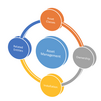 Training.jpg)
The Certified Scrum Developer (CSD) Training equips software professionals with the technical skills and Agile mindset needed to thrive in Scrum teams. This hands-on course emphasizes core Agile engineering practices such as Test-Driven Development (TDD), Continuous Integration (CI), automated testing, and clean code principles. Participants learn to build high-quality, maintainable software while collaborating effectively in cross-functional teams. Ideal for developers aiming to advance their Agile proficiency, the training bridges theory with real-world coding practices in an iterative development environment.
Certified Scrum Developer Training Interview Questions Answers - For Intermediate
1. What is the role of a Certified Scrum Developer in an Agile team?
A Certified Scrum Developer contributes to Agile teams by applying disciplined engineering practices such as test-driven development, continuous integration, and refactoring. Their primary responsibility is to build high-quality, working software that delivers customer value. The CSD actively participates in Scrum ceremonies, collaborates with the Product Owner and other stakeholders, and ensures that technical decisions align with Agile principles and the Definition of Done.
2. How does Test-Driven Development (TDD) improve code quality?
Test-Driven Development improves code quality by forcing developers to consider requirements and edge cases before writing the code. By writing failing tests first, developers ensure that code is written only to satisfy those tests, resulting in focused, cleaner, and less error-prone code. TDD also provides a safety net for refactoring and simplifies debugging since errors are detected as soon as they are introduced.
3. What is the significance of continuous integration in Agile development?
Continuous Integration (CI) is essential in Agile development as it allows teams to detect issues early, reduce integration problems, and accelerate feedback loops. Developers commit code frequently to a shared repository, triggering automated builds and tests. This ensures that the codebase remains stable and deployable, and facilitates faster delivery of incremental updates to the product.
4. How do user stories contribute to Agile software development?
User stories capture the functionality required by the end-user in simple, concise language and serve as the building blocks of the product backlog. They help Agile teams understand user needs, prioritize features, and stay focused on delivering customer-centric value. By breaking down work into user stories, teams can estimate more accurately and deliver usable increments each sprint.
5. What is the purpose of a sprint retrospective, and how can developers contribute?
A sprint retrospective is held at the end of each sprint to reflect on what went well, what didn’t, and how the team can improve. Developers contribute by sharing honest feedback on technical practices, collaboration, tool usage, and impediments faced during the sprint. Their input leads to actionable improvements, helping the team to continuously adapt and evolve.
6. How do Scrum values influence the behavior of a development team?
Scrum values—Commitment, Focus, Openness, Respect, and Courage—guide the behavior of team members and foster a collaborative, high-performing environment. Developers who embrace these values are more likely to communicate effectively, take ownership of their work, support teammates, and face challenges with a problem-solving mindset. These values are essential for sustainable Agile delivery.
7. What are some best practices in code review within a Scrum team?
Code reviews in Scrum should be collaborative, constructive, and consistent. Best practices include reviewing small chunks of code, using checklists to ensure standards, and maintaining a respectful tone. Developers should focus on logic, security, performance, and clarity, rather than personal coding styles. Reviews promote knowledge sharing, reduce bugs, and ensure collective ownership of the codebase.
8. What is the difference between Definition of Done and Acceptance Criteria?
The Definition of Done (DoD) is a universal checklist that applies to all product backlog items and defines when work is considered complete across the team. Acceptance Criteria, on the other hand, are story-specific conditions that a user story must meet to be accepted by the Product Owner. While DoD ensures consistency, Acceptance Criteria validate that the functionality meets specific requirements.
9. How does pair programming benefit Agile teams?
Pair programming enhances collaboration by involving two developers in a single coding task—one writing code (driver) and the other reviewing (observer). It improves code quality, reduces errors, and encourages real-time learning. Teams benefit from faster onboarding of new members, better knowledge sharing, and more consistent coding practices, all of which align with Agile principles.
10. How should technical debt be handled in Scrum?
Technical debt should be treated transparently and addressed systematically within the product backlog. Scrum teams should allocate time each sprint to resolve technical debt to avoid long-term issues. By tracking and prioritizing debt items like bugs, inefficient code, or outdated tools, teams can maintain code health and sustain development velocity over time.
11. How can a CSD help ensure a product increment is potentially shippable?
A Certified Scrum Developer ensures that all code meets the Definition of Done, is tested thoroughly, and integrates well with the existing system. By adhering to Agile engineering practices like TDD, CI, and automated testing, the CSD guarantees that the increment is stable, functional, and ready for deployment, aligning with Scrum’s goal of delivering value every sprint.
12. What tools and practices support Agile development?
Agile development is supported by tools such as Jira for backlog management, Git for version control, Jenkins or GitLab CI for continuous integration, and test frameworks like JUnit or Selenium. Practices like TDD, BDD, pair programming, CI/CD pipelines, and automated testing help teams deliver high-quality software rapidly and iteratively in an Agile environment.
13. How does a developer work with a Product Owner in Scrum?
Developers collaborate with the Product Owner to clarify user stories, define acceptance criteria, estimate effort, and provide feedback on technical feasibility. This ongoing communication ensures that priorities are understood and that the development work aligns with the product vision. Regular collaboration between developers and the Product Owner enhances responsiveness to changing requirements.
14. What is refactoring, and why is it important in Agile?
Refactoring involves restructuring existing code without altering its external behavior to improve readability, maintainability, and performance. In Agile, where requirements frequently evolve, refactoring is vital to keep the codebase adaptable and clean. It reduces technical debt and makes future enhancements easier, supporting sustainable software development over multiple sprints.
15. How do Scrum teams measure productivity and quality?
Scrum teams use metrics such as velocity, burndown charts, and cycle time to measure productivity, while quality is assessed through defect density, code coverage, and customer satisfaction. These metrics provide transparency and help identify areas for improvement. Regular retrospectives and reviews complement quantitative measures, ensuring continuous feedback and delivery excellence.
Certified Scrum Developer Training Interview Questions Answers - For Advanced
1. How does a Certified Scrum Developer ensure software scalability while adhering to Agile principles?
A Certified Scrum Developer ensures software scalability by designing systems that are modular, loosely coupled, and follow SOLID principles, all while remaining responsive to change. Scalability must be addressed incrementally in Agile, often beginning with a minimum viable architecture and evolving based on real usage patterns. Developers may leverage microservices, message queues, and containerization (e.g., Docker, Kubernetes) to isolate and scale services independently. Performance testing is integrated into the Definition of Done to detect bottlenecks early. Additionally, CSDs contribute to backlog refinement by surfacing architectural considerations, identifying load-impacting features, and recommending non-functional requirements to be prioritized. They also document architectural decisions using lightweight ADRs (Architecture Decision Records) and conduct cross-functional spike stories to validate scalable solutions within sprint cycles, all while maintaining continuous delivery cadence.
2. What is the significance of cross-functional development teams in Scrum, and how does it affect the role of a developer?
Cross-functional teams are central to Scrum's effectiveness, as they possess all the necessary skills to deliver a potentially shippable product increment. This structure eliminates silos and promotes ownership, accountability, and collaboration. For a developer, this means expanding their competencies beyond coding, including tasks like automated testing, deployment scripting, basic UX implementation, and even DevOps activities. The CSD must be comfortable contributing across technical disciplines, engaging with testers, designers, and business analysts in real-time. This holistic involvement accelerates feedback loops and empowers the team to respond to changes quickly. Developers in cross-functional teams gain a broader product perspective, fostering innovation and reducing delays caused by handoffs between specialized roles.
3. How does a Scrum Developer integrate secure coding practices into the Agile development lifecycle?
Secure coding is not optional in today’s threat landscape, and a Certified Scrum Developer must embed security at every step of the Agile lifecycle. This includes following OWASP guidelines, conducting static code analysis, and writing unit and integration tests that cover security scenarios. Threat modeling should be conducted collaboratively with the team, especially during sprint planning or backlog refinement. Secure authentication, input validation, encryption, and session management are implemented as part of coding standards. Developers also use secure frameworks and libraries, ensure code dependencies are up to date, and apply security patches through CI pipelines. By automating security checks (DevSecOps) and integrating them into the CI/CD process, security becomes part of the Definition of Done, not an afterthought.
4. What is the role of technical spikes in Scrum, and how should a CSD handle them?
Technical spikes are time-boxed research activities used to explore and reduce uncertainty around a technical or design problem. A CSD handles spikes by clearly defining their objective, expected outcomes, and deliverables—often in the form of documentation, prototypes, or proof-of-concepts. These spikes are added to the product backlog, estimated, and prioritized like any other story. They are especially useful when the team encounters unfamiliar technologies, integration complexities, or performance challenges. The developer ensures that the spike does not drift into development work and that insights gained are shared with the entire team to inform future sprint planning and architectural decisions. Properly executed spikes enhance decision-making and reduce risk without compromising the sprint’s delivery focus.
5. How do Agile teams ensure alignment on coding standards and architectural decisions?
Alignment on coding standards and architecture is achieved through collaboration, transparency, and regular reinforcement. Scrum developers participate in coding dojos, internal workshops, and Communities of Practice to define and share best practices. The team adopts a coding standard document, uses linters and static code analysis tools to enforce guidelines, and sets up pre-commit hooks to automate compliance. Architectural decisions are made collaboratively, often during backlog refinement or technical design meetings, and documented via ADRs. Developers also use version-controlled wiki pages and architecture diagrams to maintain shared understanding. Code reviews play a critical role in upholding consistency, enabling developers to validate not only code correctness but also conformance to standards and design intentions.
6. How can Scrum Developers contribute to improving the Sprint Retrospective?
Scrum Developers contribute to retrospectives by offering objective, actionable feedback based on their experience in the sprint. They bring insights into what worked and what didn’t from a technical standpoint, such as deployment issues, test failures, build times, or refactoring challenges. They can suggest improvements to tooling, pair programming effectiveness, or process bottlenecks. More advanced CSDs may bring data, such as test coverage reports or CI logs, to inform discussions with evidence. Beyond problem identification, developers help co-create experiments for improvement and volunteer to implement changes in the following sprint. Their technical lens is vital to balancing process enhancements with continuous delivery of quality software.
7. In what ways does a Scrum Developer support effective backlog refinement?
A Scrum Developer plays a proactive role in backlog refinement by reviewing upcoming user stories ahead of planning sessions, asking clarifying questions, and identifying hidden technical dependencies. They ensure stories are sliced vertically, not technically, to maximize deliverable value. Developers also estimate stories using techniques like Planning Poker, consider effort involved in automation or test setup, and flag stories requiring architectural input or research. When needed, they suggest splitting epics, introducing enabler stories for infrastructure needs, or highlighting missing acceptance criteria. Their early involvement helps prevent technical surprises during sprints and fosters shared ownership of backlog grooming.
8. How do developers manage branching strategies in Agile to support fast, stable delivery?
To support continuous integration and fast feedback, developers adopt lightweight branching strategies such as trunk-based development or short-lived feature branches. In trunk-based development, developers work directly on the mainline or maintain very short branches that are merged back daily, reducing merge conflicts and integration failures. CI pipelines enforce automatic builds and tests before merge approvals. Feature toggles or flags are often used to deploy incomplete features without exposing them to end-users. Developers may also use GitFlow or GitHub Flow in more structured environments, but always with an emphasis on minimizing delays between code writing and integration. Automation in pull requests, code linting, and mandatory peer reviews ensures high-quality merges with minimal friction.
9. How does a CSD ensure maintainability and extensibility of the codebase?
Maintainability and extensibility are ensured by writing clean, modular, and well-documented code that adheres to established design principles like SOLID, DRY (Don't Repeat Yourself), and KISS (Keep It Simple, Stupid). A Certified Scrum Developer structures code using abstraction and encapsulation to allow components to evolve independently. Automated unit and integration tests serve as a safety net for future changes. Developers also use design patterns where appropriate and avoid over-engineering. Refactoring is performed routinely to improve clarity and reduce complexity. The CSD ensures naming conventions, consistent structure, and inline documentation make it easy for new developers to understand and modify code without introducing bugs.
10. How do developers handle defect management during a sprint?
When a defect is identified during the sprint, developers assess whether it’s related to current sprint work or an existing issue. If it’s tied to the ongoing sprint, the team addresses it within the same sprint cycle. For backlog defects, the issue is logged, triaged based on priority and severity, and scheduled for future sprints. Developers use tools like JIRA or Azure DevOps to track, reproduce, fix, and verify bugs. Root cause analysis is conducted for recurring defects to identify systemic issues. The team may update the Definition of Done to prevent similar bugs in the future. Developers also write regression tests to ensure the defect doesn't reoccur, thus improving product stability.
11. How do Scrum Developers ensure seamless collaboration with remote teams?
Scrum Developers in distributed teams use asynchronous and synchronous communication tools effectively, including Slack, Microsoft Teams, Jira, and Confluence. They commit code frequently, document thoroughly, and update task statuses regularly. Virtual stand-ups, pair programming via screen share, and collaborative code reviews bridge the physical distance. Developers agree on overlapping hours for real-time collaboration and follow working agreements to set expectations. Code comments, detailed PR descriptions, and use of architectural diagrams help build shared understanding. Scrum Developers also advocate for automated pipelines, dashboards, and shared repositories to ensure visibility and continuity across time zones.
12. What’s the importance of version control in Agile, and how does a CSD apply it?
Version control is the backbone of Agile software development, enabling collaboration, traceability, and safe experimentation. A CSD uses version control tools like Git to manage source code changes across the team. Branching strategies support parallel development, and tools like GitHub or GitLab allow for structured code reviews. Tags and releases help track sprint increments, while commit messages link to user stories and document changes clearly. Rollbacks, merges, and reverts are safely managed, ensuring teams can always recover from issues. Developers use Git workflows aligned with CI/CD pipelines to automate deployments and enforce code quality standards throughout the development lifecycle.
13. How do you balance feature development and refactoring within a sprint?
Balancing feature development and refactoring requires disciplined sprint planning and clear communication with the Product Owner. A Certified Scrum Developer advocates for technical health by identifying refactoring needs early and suggesting they be included as tasks within stories or as separate backlog items. Small, continuous refactoring is preferred over large-scale changes to reduce risk and disruption. Developers must ensure that refactoring does not alter the functionality and is backed by tests. Pair programming and code reviews help validate refactoring decisions. By linking technical improvements to business value—such as improved performance, lower maintenance costs, or faster feature delivery—developers gain stakeholder buy-in for ongoing codebase improvement.
14. How should Scrum Developers handle high-priority production incidents during a sprint?
When high-priority production issues arise, the Scrum Team may need to pause or re-scope sprint goals. Developers conduct an immediate impact assessment and collaborate with the Product Owner to prioritize the fix. Ideally, the team follows an "expedite lane" process, where urgent bugs are addressed outside the sprint backlog while minimizing disruption. Developers follow incident response protocols, including logging the issue, conducting root cause analysis, applying hotfixes, and documenting remediation steps. After resolution, a post-mortem is held to prevent recurrence, and learnings are integrated into team practices. This approach ensures service continuity without derailing sprint objectives entirely.
15. What qualities differentiate an expert-level Scrum Developer from a novice?
An expert Scrum Developer demonstrates not only technical excellence but also a deep understanding of Agile values, team dynamics, and product mindset. They consistently deliver clean, tested, and scalable code while mentoring others and elevating team performance. Experts proactively address technical debt, contribute to architectural decisions, and align development efforts with business goals. They embody continuous learning, advocate for quality practices, and communicate effectively with non-technical stakeholders. Unlike novices who focus on task completion, expert developers think in terms of system evolution, customer value, and long-term sustainability. They are strategic contributors who help transform Agile theory into practical, repeatable success.
Course Schedule
| Nov, 2025 | Weekdays | Mon-Fri | Enquire Now |
| Weekend | Sat-Sun | Enquire Now | |
| Dec, 2025 | Weekdays | Mon-Fri | Enquire Now |
| Weekend | Sat-Sun | Enquire Now |
Related Courses
Related Articles
- Highlights of SAP Billing and Revenue Innovation Management (BRIM) Solution
- Informatica IICS: The Complete Online Guide to Cloud Data Management
- How Workday SCM Training Can Propel Your Career Forward
- Finance Role with SAP S4 HANA Group Reporting Certification
- How Advanced SAS Training Certification Course Online Helps You
Related Interview
Related FAQ's
- Instructor-led Live Online Interactive Training
- Project Based Customized Learning
- Fast Track Training Program
- Self-paced learning
- In one-on-one training, you have the flexibility to choose the days, timings, and duration according to your preferences.
- We create a personalized training calendar based on your chosen schedule.
- Complete Live Online Interactive Training of the Course
- After Training Recorded Videos
- Session-wise Learning Material and notes for lifetime
- Practical & Assignments exercises
- Global Course Completion Certificate
- 24x7 after Training Support














 Join our Live Instructor-Led online classes delivered by industry experts
Join our Live Instructor-Led online classes delivered by industry experts